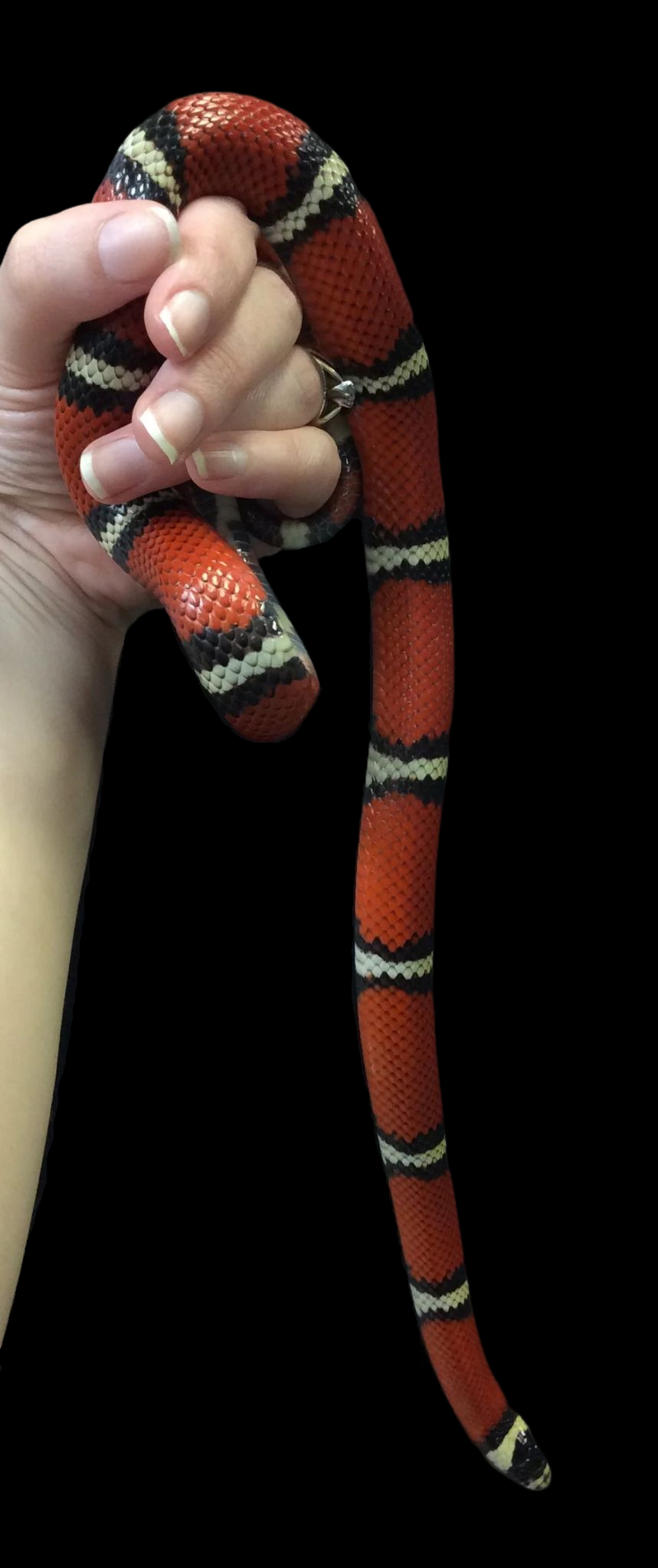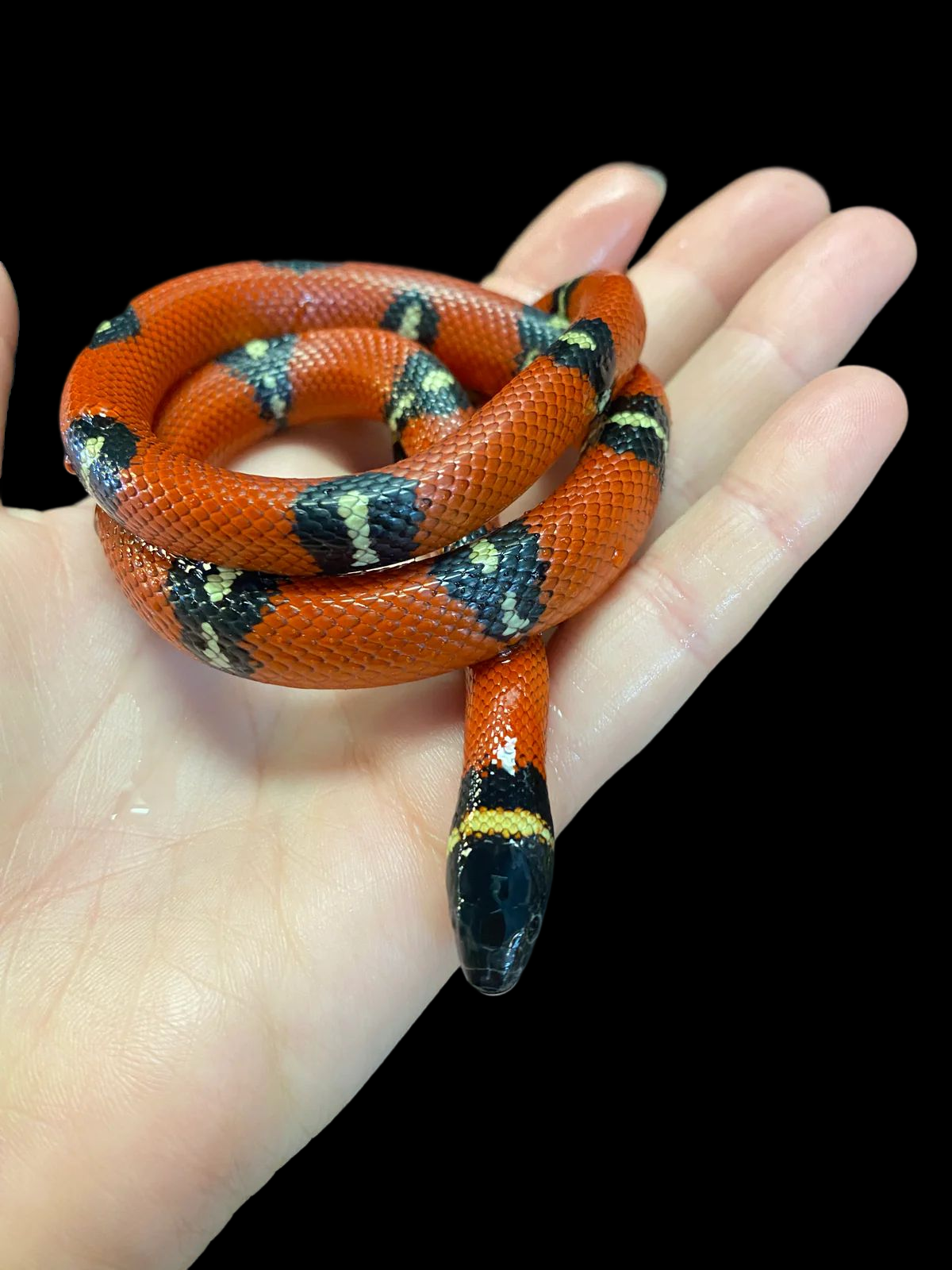Photo Disclaimer
Description
Sinaloan Milksnake (Normal)
Scientific Name: Lampropeltis triangulum sinaloae
Common Name: Sinaloan Milksnake
Species Overview
Size: Adults typically reach 3.5–4.5 feet (1.0–1.4 m) in length, with a slender, muscular body and smooth, glossy scales.
Appearance: The Normal Sinaloan Milksnake is a classic tri-banded species featuring broad red bands bordered by narrow black rings and separated by crisp white or cream bands. The red coloration is deep and saturated, forming the dominant hue across most of the body, while the clean black and white contrast provides a bold, high-visibility pattern. The head is black with a distinct white or red snout patch, and the underside is checkered black and white. This striking colouration mimics that of the venomous coral snake, serving as an effective natural deterrent to predators. The Normal form is among the most recognizable and admired of all milksnake subspecies for its symmetry, clarity, and brightness.
Distribution: Native to western Mexico, primarily across Sinaloa, Sonora, and Chihuahua.
Habitat: Sinaloan Milksnakes inhabit dry scrublands, forest edges, rocky grasslands, and agricultural regions in northwestern Mexico. In captivity, they thrive in naturalistic terrariums with soft substrate, climbing branches, and secure hiding areas.
Behaviour: These snakes are calm, confident, and intelligent. They are hardy, easily maintained in captivity, and tolerate gentle handling well once accustomed to regular interaction.
Captive Care
Enclosure: Provide an enclosure at least 3–4 feet in length for adults. Include multiple hides, climbing décor, and smooth furnishings. A naturalistic substrate such as soil, coconut fibre, or aspen allows burrowing and helps regulate humidity.
Temperature & Humidity: Maintain a daytime gradient of 78–85°F (25–29°C) with a basking area near 88–90°F (31–32°C). Allow nighttime drops to around 70°F (21°C). Maintain humidity between 50–65%, providing a humid hide during shedding.
Diet: Offer frozen-thawed rodents every 7–10 days for juveniles and every 10–14 days for adults. Sinaloan Milksnakes are strong feeders and rarely refuse meals.
Behaviour in Captivity: Active, curious, and hardy, these snakes adapt quickly to captivity and are known for their excellent feeding response. Their vivid coloration makes them a favourite for both display and breeding programs.
Special Considerations: Milksnakes should always be housed individually, as they may consume other snakes.
Genetics Note
The Sinaloan Milksnake is a naturally tri-coloured subspecies with consistent red, black, and white banding. While the wild type is already visually striking, several morphs have been developed in captivity through selective breeding, including Albino, Anerythristic, and Splotched lines. Albino variants remove all black pigment, creating brilliant red-and-white snakes, while Anerythristic forms remove red pigment, leaving grey and white banding. Polygenic forms such as Splotched further diversify pattern expression, offering unique visual variation within the species. Despite these morphs, the Normal Sinaloan Milksnake remains one of the most iconic and dependable examples of tri-coloured kingsnake patterning in herpetoculture.
Species Summary
The Normal Sinaloan Milksnake (Lampropeltis triangulum sinaloae) is one of the most highly regarded and well-recognized milksnakes in the reptile community. Its bright, natural coloration, calm temperament, and dependable feeding habits make it a staple among both beginner keepers and experienced breeders.



